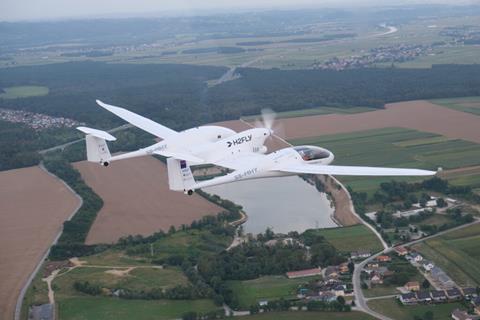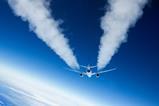In what it claims is a world first, German advanced powertrain developer H2FLY has completed a series of manned flights using a fuel cell-equipped aircraft powered by liquid hydrogen.
In all, four flights of the HY4 demonstrator aircraft were conducted from Maribor in Slovenia, including one that lasted for over 3h, it says.

Previously operated using gaseous hydrogen, H2FLY says the results of the flight testing indicate that the change to liquid hydrogen will extend the aircraft’s range from 405nm (750km) to 810nm. Benefits of the switch include lighter fuel tanks and improved volumetric energy density.
“This achievement marks a watershed moment in the use of hydrogen to power aircraft. Together with our partners, we have demonstrated the viability of liquid hydrogen to support medium- and long-range emissions-free flight,” says Professor Josef Kallo, co-founder of H2FLY.
“We are now looking ahead to scaling up our technology for regional aircraft and other applications, beginning the critical mission of decarbonising commercial aviation.”
H2FLY has been leading an EU-backed project called HEAVEN which aimed to demonstrate the feasibility of using cryogenic liquid hydrogen in aircraft. Partners in the effort include Air Liquide, Pipistrel Vertical Solutions, Germany’s DLR, EKPO Fuel Cell Technologies and Fundacion Ayesa.
Additional funding has been provided by the German ministries for Economic Affairs & Climate Action, and Digital & Transport, alongside the University of Ulm.
H2FLY will now work to commercialise the fuel cell powertrain. It is already partnered with Deutsche Aircraft for a future hydrogen-powered version of its D328eco.
Earlier this year, Joby-owned H2FLY unveiled a new high-power version of its H175 fuel cell system. Designed to be operated at altitudes of up to 27,000ft, it is targeted at commercial aircraft applications.
Initially sized at 175kW, the company says the design is scalable to provide megawatt-class power output suitable for aircraft with 20-80 seats.































